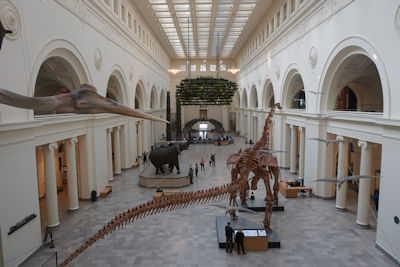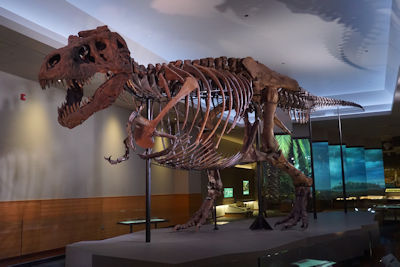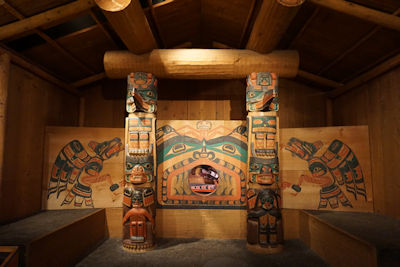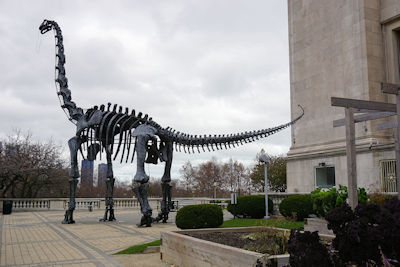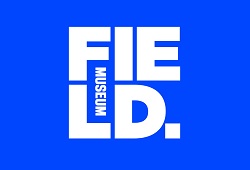
It happened at the World’s Fair. Or, more precisely, at the World’s Columbian Exposition in Chicago. Over 27 million people visited the Exposition over a span of six months in 1893, drawn by the first ever Ferris wheel and baked Brownies, ragtime piano player Scott Joplin, the advent of electricity, and “great buildings” that showcased everything from agriculture to machinery, forestry to horticulture.
Tucked away from the main activities – and not completed until two months after the World’s Columbian Exposition opened – was the fourteenth and final great building, dedicated to anthropology. Anthropology was relatively unknown in the United States at the time, something that Harvard Professor Frederic Putnam was determined change. Placed in charge of curating an exhibit by the Exposition’s directors, Putnam amassed a collection too large for the initial display area, thus the late addition of an Anthropology Building.
Frederic Putnam also had a not-so-well-hidden agenda behind his efforts – the creation of a natural history museum in Chicago. The Anthropology Building at the World’s Columbian Exposition was thus a prototype for what that museum could look like, and with the artifacts Putnam had gathered, offered the perfect opportunity to launch a more permanent expansion.
After hearing Putnam speak about his plans at the Chicago Commercial Club, local businessman Edward Ayer likewise became a strong advocate for the creation of a natural history museum. Although Ayer was wealthy, however, he was not wealthy enough to pay for such an endeavor himself. He thus turned to Marshall Field, founder of Marshall Field Department Stores.
Field initially scoffed at the idea of funding a museum, but Ayer was undeterred. He thus offered Field a challenge – “If I can’t talk you out of a million dollars in fifteen minutes, I’m no good and neither are you.” Those 15 minutes turned into 45, with Ayer’s pointing out that the great businessmen of the past were now largely forgotten, and that the same fate awaited Marshall Field unless he found a way to secure a true legacy. And what better legacy could there be than having “the privilege of being the educational host of untold millions of people?”
Marshall Field not only listened to Edward Ayer’s plans for a museum but also agreed to visit the Anthropology Building at the World’s Columbian Exposition. Two days later, he signed the million dollar check that Ayer’s had challenged him to write.
The Field Columbian Museum launched in 1894 at the Palace of Fine Arts Building from the World’s Columbian Exposition, with a focus on transportation and industry in addition to natural history. Teams of scientists were likewise sent to uncover dinosaur fossils, plant and mineral specimens, Native American relics, and anything else related to science. It wasn’t long before botany, anthropology, archaeology, zoology, and geology began to dominate the Field’s collection, pushing transportation and industry aside and fully committing the museum to natural history alone.
This renewed vision not only led to a name change – the Field Museum of Natural History – but the erection of a new home for the museum as well. Construction began in 1915 on a sea of mud along the shores of Lake Michigan. Landfill had to be hauled in to raise the surface level and stabilize the foundation before work on the building could begin in earnest.
After completion, another six months was then needed to relocate the Field Museum’s massive collection. The doors to the museum’s new home were officially opened to the public on May 2, 1921, to much fanfare. Architect Daniel Burnham’s grand design contained ample storage space and room for renovation and expansion, ensuring that the Field Museum’s new location would be a permanent one.
While the original Field Columbian Museum simply featured rows of mahogany cases to showcase its collection, the Field Museum of the twenty-first century contains multi-media landscapes that combine artifacts with video, lighting, and interactive components to enhance their exhibition.
Arguably the highlight of the Field Museum is the fossilized remains of a massive Tyrannosaurus rex that measures forty-and-a-half feet long and equipped with twelve-inch, dagger like teeth. Named Sue after dinosaur hunter Sue Hendrickson – who discovered the fossils jutting out of a South Dakota cliff in 1990 – this particular T. rex is not only the largest ever found but is ninety percent intact. Only forty T. rex remains have ever been uncovered, with just six being greater than forty percent complete, making Sue a true marvel on multiple levels.
The Field acquired Sue the T. Rex when it went up for auction in 1997. Fearing that a wealthy private collector might obtain the specimen and lock it away from public view, the Field raised the necessary $8.36 million from a coalition of funders to ensure that wouldn’t happen.
In addition to an impressive collection of dinosaur fossils, another highlight of the Field Museum is its Ancient Americas exhibit that examines twenty indigenous cultures that once populated both North and South America, including the Maya, Moche, Inca, and Aztecs. Each are spotlighted separately, exploring the rise of their specific culture as well as its beliefs and the every-day lives of both the elite and working class to give the most thorough representation as possible.
While the Ancient Americas exhibit represents the history of Native Americans before the arrival of Europeans, the Alsdorf Hall of Northeast Coast and Arctic Peoples contains artifacts collected at the turn of the twentieth century, a time when indigenous cultures were struggling to retain their distinctive identities. Featuring a full-size replica of a Pawnee earth lodge, the Hall is filled with a variety of ceramics, basketry, and beadworks surrounded by a collection of totem poles that rise high above the exhibit floor.
Over 100 years after it first opened its doors to the public, the Field Museum is one of the premier natural history museums in the world and attracts over two million visitors a year. Founded in the same era as the American Museum of Natural History in New York City, the Smithsonian National Museum of Natural History in Washington DC, and the Carnegie Museum of Natural History in Pittsburgh, its impact within the field of natural history is on par with any institution in the United States – and an enjoyable place to visit as well.
Anthony Letizia
